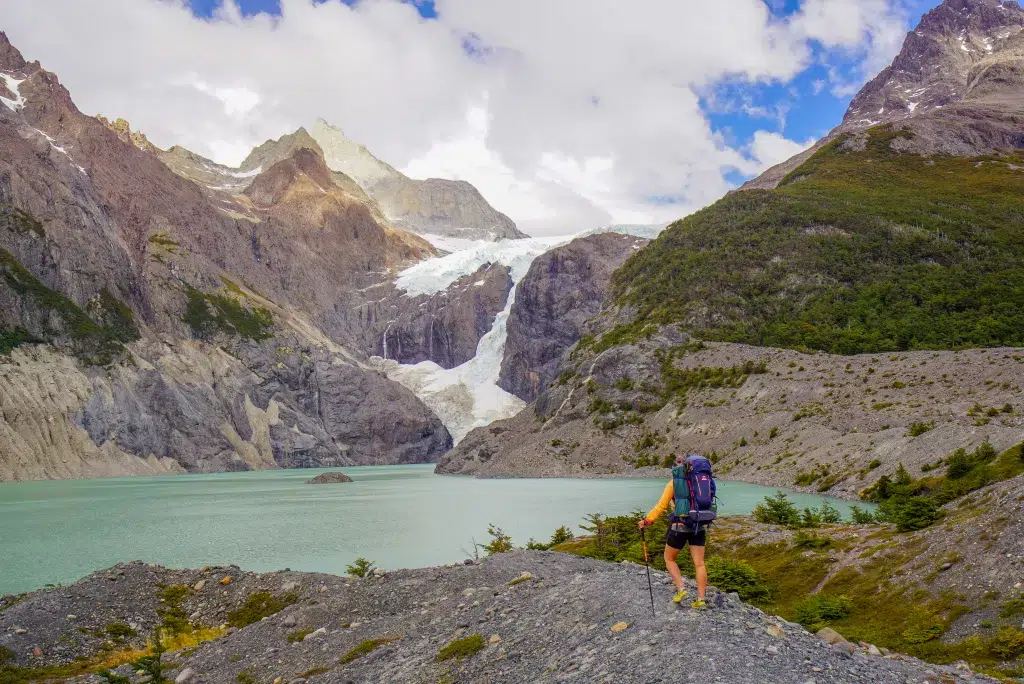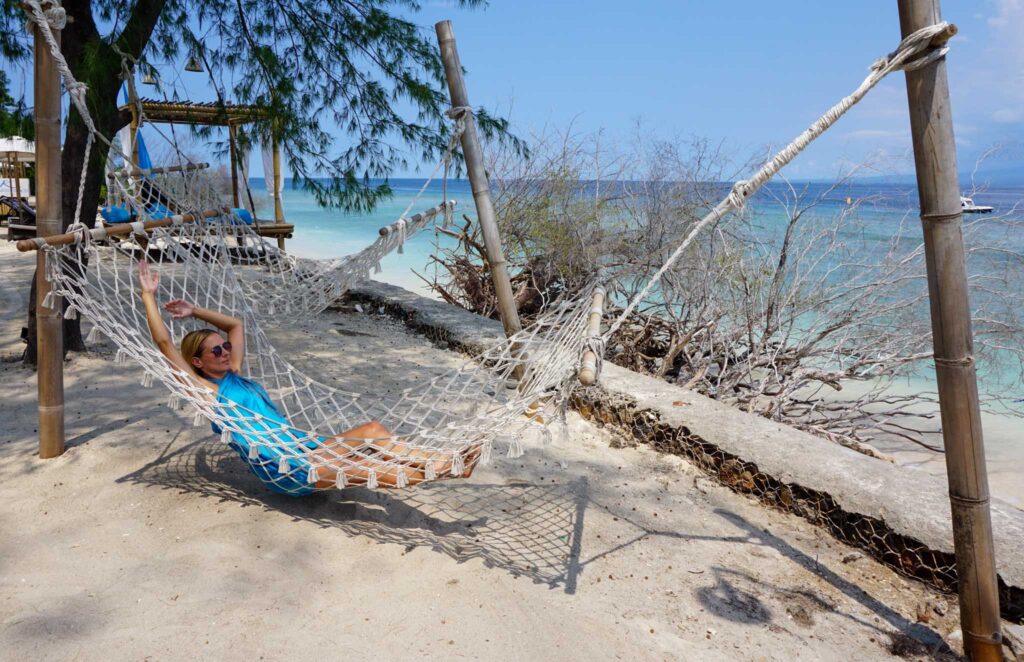Best Eco-Friendly Camping Tips
Estimated reading time: 16 minutes
In the realm of sustainable adventure, where every choice leaves a trace, embarking on a camping trip becomes an opportunity to connect with nature while preserving its beauty. If you enjoy camping, then environmental sustainability is also likely important to you. I’ll help you make your next trip more environmentally friendly with just a little extra effort and these eco-conscious camping strategies.
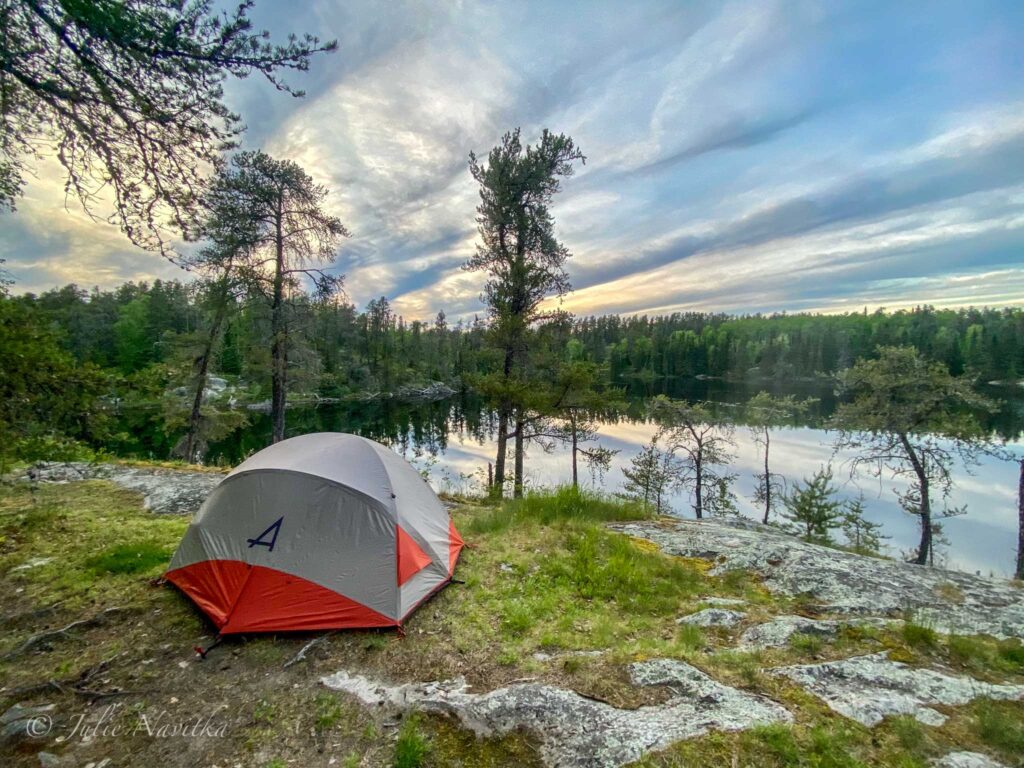
Table Of Contents:
Eco-Sensitive Camping Advice for Waste Management
Tips to Protect the Natural Environment
Leave No Trace – Zero Waste Camping Ideas
7 Best Environmentally-Friendly Camping tips
With so much talk about sustainability, it seems like a no-brainer that low-impact outdoor living is essential if we want to preserve our natural environment. First, let’s describe environmentally friendly camping. It may seem straightforward – clean up after yourself, respect and protect your surroundings, and avoid using chemicals.
But what most of us need to think about, however, are the other aspects of our outdoor adventure that can make our trip not-so-sustainable. What we pack and bring with us and our actions toward mindful wilderness exploration must also be considered.
Spending time outdoors can provide tons of fun with friends, family or kids and is excellent for our mental health. Let’s ensure we aren’t negatively affecting the health of our natural environment while we’re at it.
Whether our green outdoor adventure takes us hiking out to the backcountry, enjoying an urban park, renting a campsite, RV or car camping, or on a faraway ecotourism trip, we should be doing our best to practice eco-friendly outdoor play.
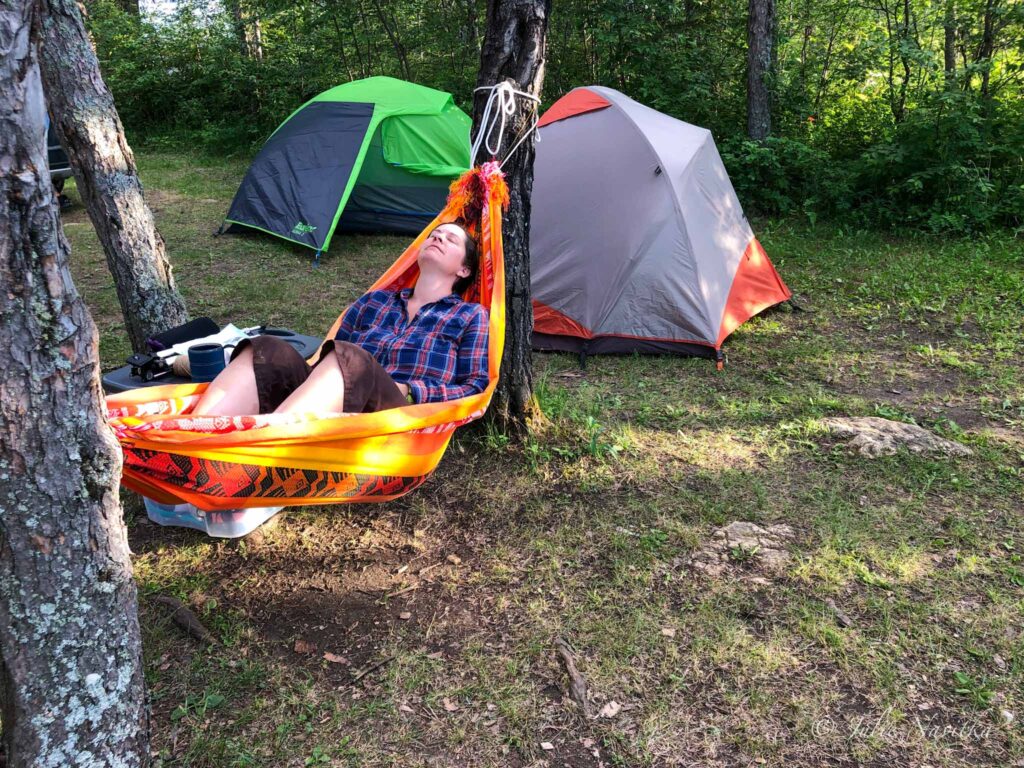
1. Choosing Your eco-friendly camping Destination
Where we choose to camp can make a difference in how eco-friendly our excursion is.
Backcountry Eco-Camping
If you’re heading out into the wilderness, make sure you consider the following responsible wilderness practices:
- Do your research about the area. Consider another location if there are any issues or environmental concerns, such as water pollution or wildfire risk.
- Only camp in designated areas. Disrupting the surroundings to clear a camp can have detrimental effects on the environment, especially if many people do so frequently.
- Know the risks you are taking in the chosen area and only undertake what you have the experience and fitness for.
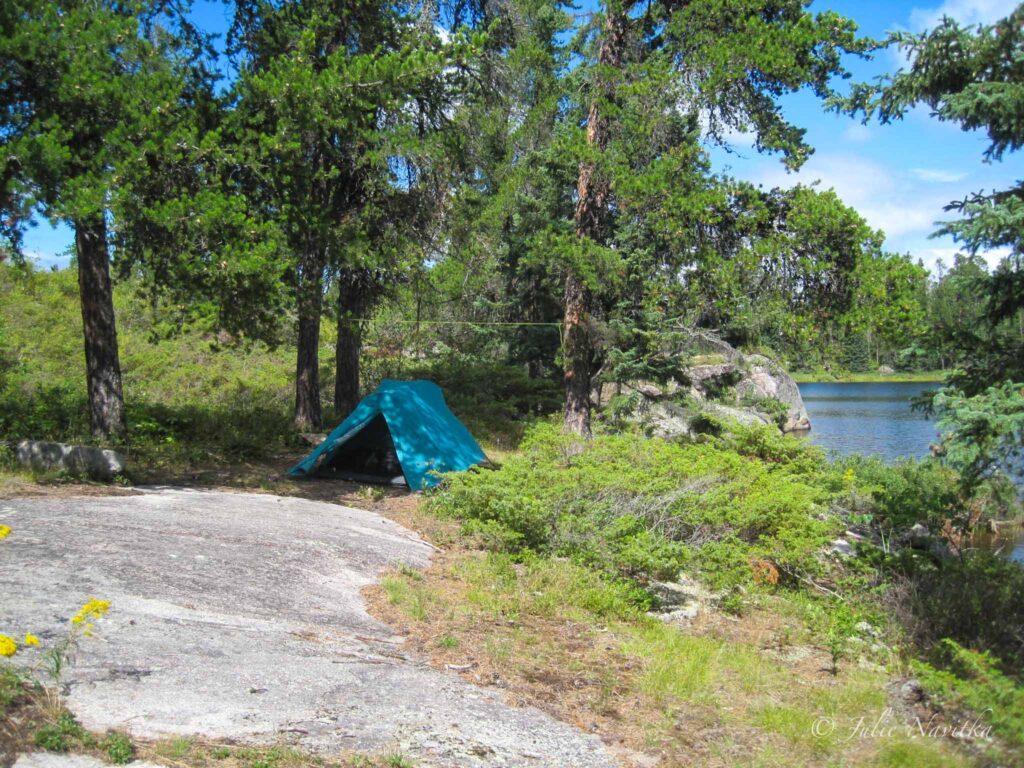
Front-Country Earth-friendly camping suggestions
If you’re staying in a campground, there are still some important aspects to consider before booking your campsite.
- Look into the sustainability of the park or campground. Ask about their waste management, energy sources, and any environmental initiatives they are undertaking.
- Support campgrounds that make sustainability their priority.
- No matter where your trip takes you, if the area has a fee, pay it. These funds usually help provide maintenance and services to the area essential for its protection and those who recreate there.
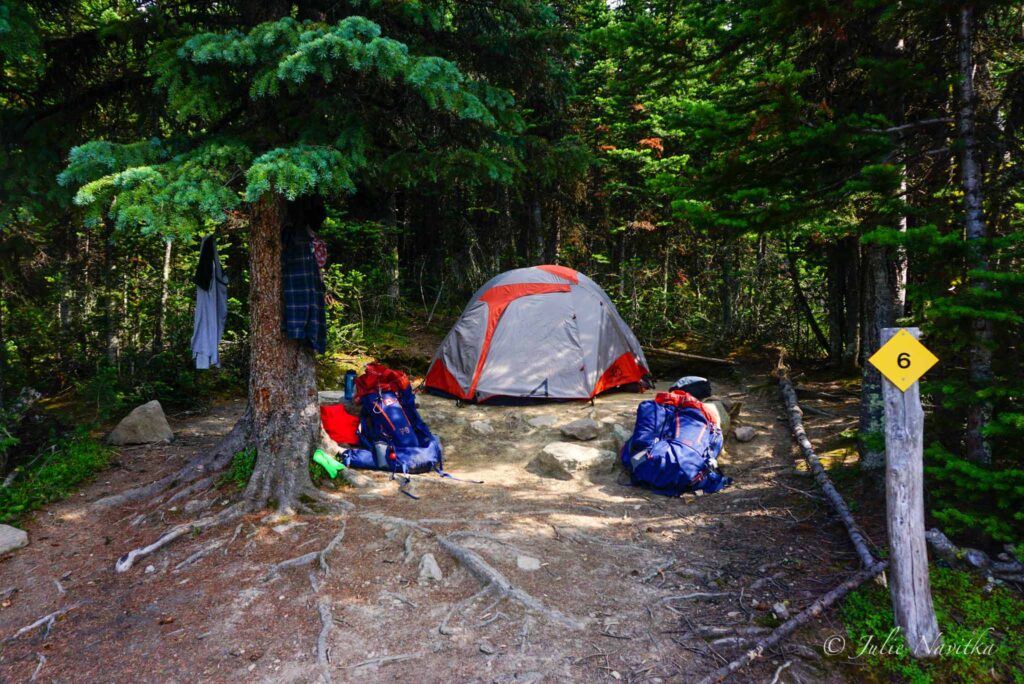
*Pro tip – plan your camping trip for the off-season, and you’ll enjoy nature as it was intended, with fewer people around!
2. Safety First while eco-camping
Making sure you’re prepared for the unexpected can save resources, and it might save others from putting themselves at risk to come to your aid. No matter how you plan to spend time in nature, there are some non-negotiables regarding safety.
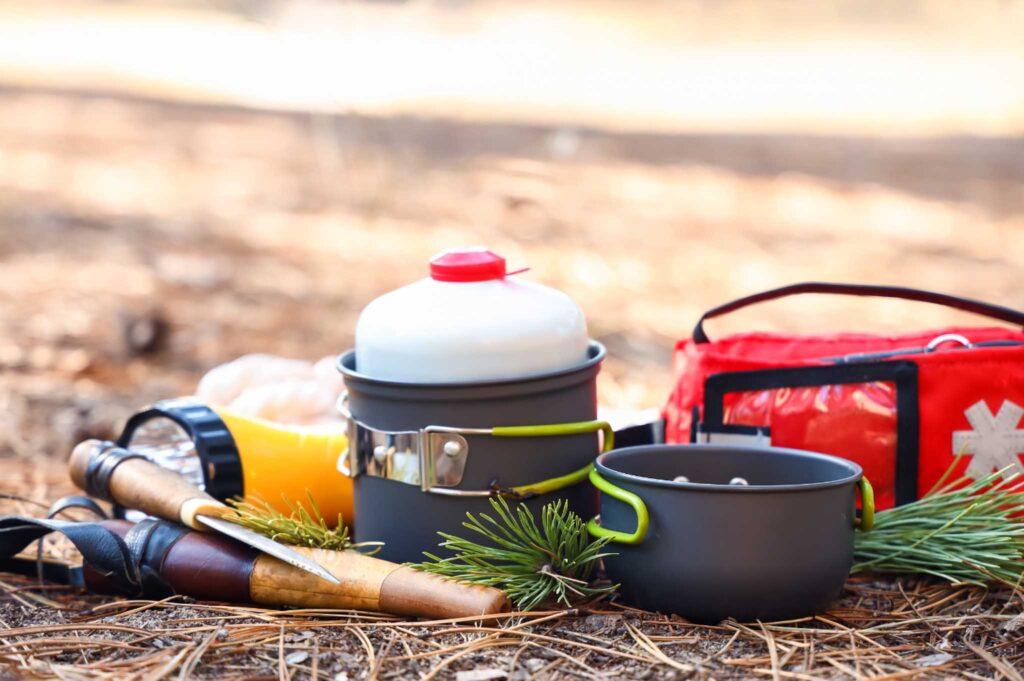
Any Kind of Camping
- Pack a first aid kit, including allergy pills for unexpected insect stings and an emergency blanket.
- Bring a flashlight or headlamp with some extra rechargeable batteries.
- Green campsite habits include cleaning up your site and storing food in a locked vehicle or bear box when you are not there and at night to avoid unwanted wild guests.
- Respect all campfire regulations or fire bans that might be in place. They exist for a very important reason.
- Pack appropriate gear and warm enough sleeping bags for the weather and temperature.
- Pack an eco-friendly SPF, like this one from Butter Me Up Organics.

Butter Me Up Organics Natural Organic Sunscreen
About This Item:
- Organic, All Natural and Reef Safe
- Non synthetic dyes and fragrances
- Shipped Plastic Free
- Entirely Cruelty Free
- Zero Waste Company
Additional Safety for Backcountry Camping
- Do your research about the area you’re planning to visit. Familiarizing yourself with the trail or waterway you’re using and having an itinerary can help keep you safe.
- Leave an itinerary and map with someone you trust and keep in touch with them if possible.
- Download any available trail or area maps on your device that you can use to help you navigate offline if needed. There are tons of great outdoor apps you can use; my favourites are AllTrails and Wikiloc.
- Bring a paper map and a compass (and know how to use them!) just in case something happens to your device.
- It’s a good idea to bring a satellite device with you for emergency purposes if exploring an area that does not have cell service.
- Bring basic fire-starting necessities in case you have to rely on fire for warmth or to boil water to drink.
- Make sure you have enough water with you for the trip, or you know where you can refill along the way. Bring a filter or tabs (or both!) to ensure you don’t dehydrate.
- Pack your phone and a charging bank or solar power charger, like this one from Biolite.

Biolite Solar Panel 5
About This Item:
- IPX 4 Weather Resistance
- 5 Watts of useable power via USB outlet
- 360 degree kickstand featuring Optimal Sun System
- Updated integrated 3000 mAh on-board battery
- 13.7 oz & 10.12 x 8.19 x 0.94 inches
No one should take wilderness camping lightly. It’s vital that you only undertake a journey that you have enough experience for and feel confident you can handle physically.
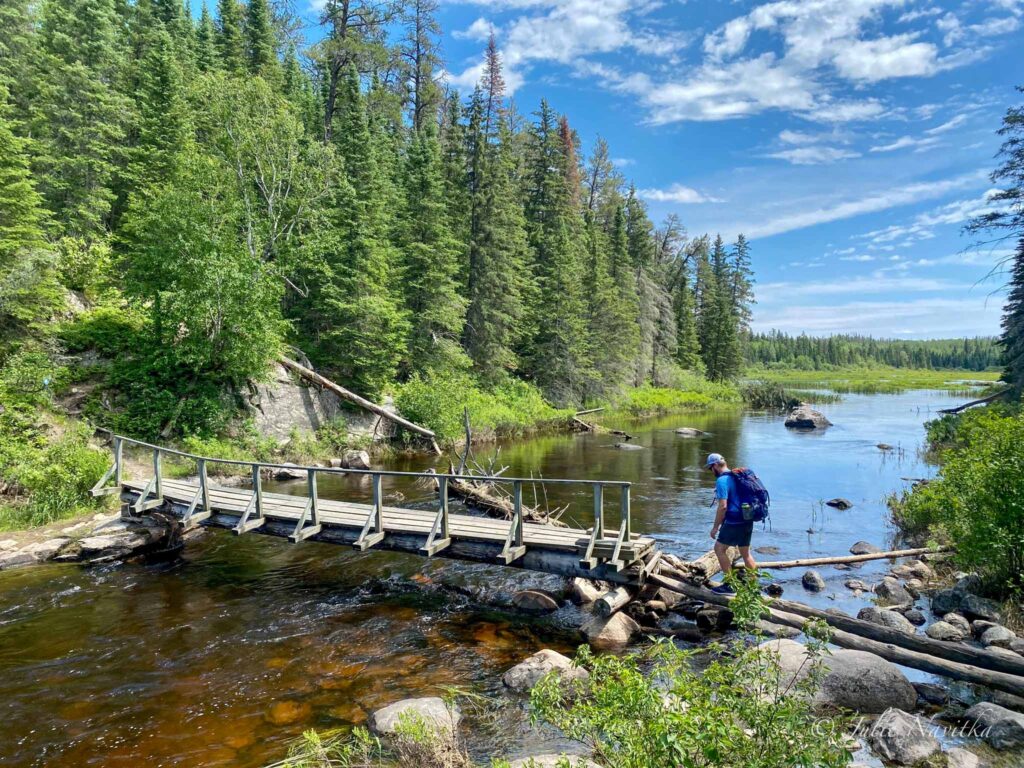
3. Food For Thought
Preparing for a sustainable camping trip starts before you even leave the house. Just as the food we eat at home affects our sustainability, so do the meals and snacks we choose to bring.
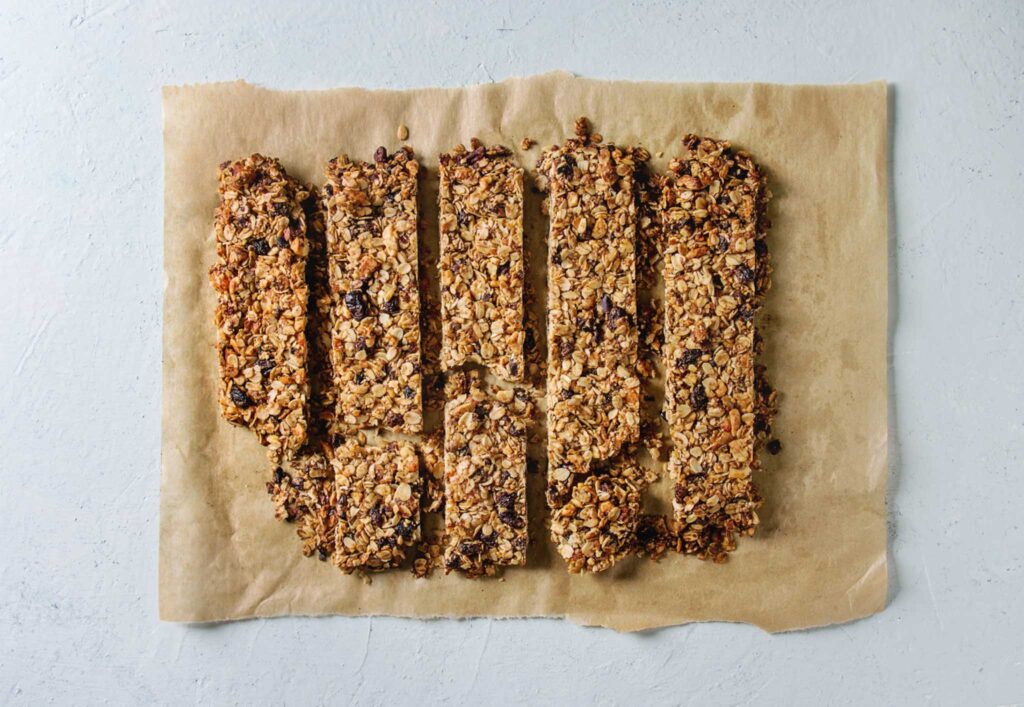
- Buying food from local stores and opting for organic makes for more environmentally friendly camping.
- Reduce packaging by buying bulk and using refillable containers.
- To avoid disposable packaging, make your own camp or trail food, such as energy bars, gels, and trail mixes.
- Although it’s tempting to grab a 12-pack of bottled water, choose reusable water bottles, or borrow or rent a water cube if you’re staying in a campground and want to reduce the number of trips you’re taking to the water source.
- Load up on the veggies and fruit – a low meat or vegetarian/vegan diet is more environmentally friendly.
- Bring your food and snacks in reusable containers, like the silicone bags and bowls made by Stasher.

Stasher Starter Kit – 5 Pack
About This Item:
- Dishwasher Safe
- Freezer Safe
- Microwave Friendly
- One Bag Replaces 260 Single Use Bags Yearly
- Portion Of Profit Goes To Non-Profits Working To Protect the Planet
*Pro tip – instead of buying a bag of ice for your coolers, freeze some water in reusable containers instead. The bonuses are that you won’t get that little lake at the bottom of the coolers and can drink the water after it melts!
4. Sustainable Camping Gear
If you already own something that will suffice for your camping essential needs, that is the most sustainable camping gear you can have. Don’t purchase new camping gear unless you absolutely need it, as this just leads to more consumption.
Unless you are a great outdoors addict like me who requires camping essentials almost every weekend, you might consider renting or buying used gear for sustainability on a budget. There are many places to find rentable camping gear online, including this REI Rentals website.
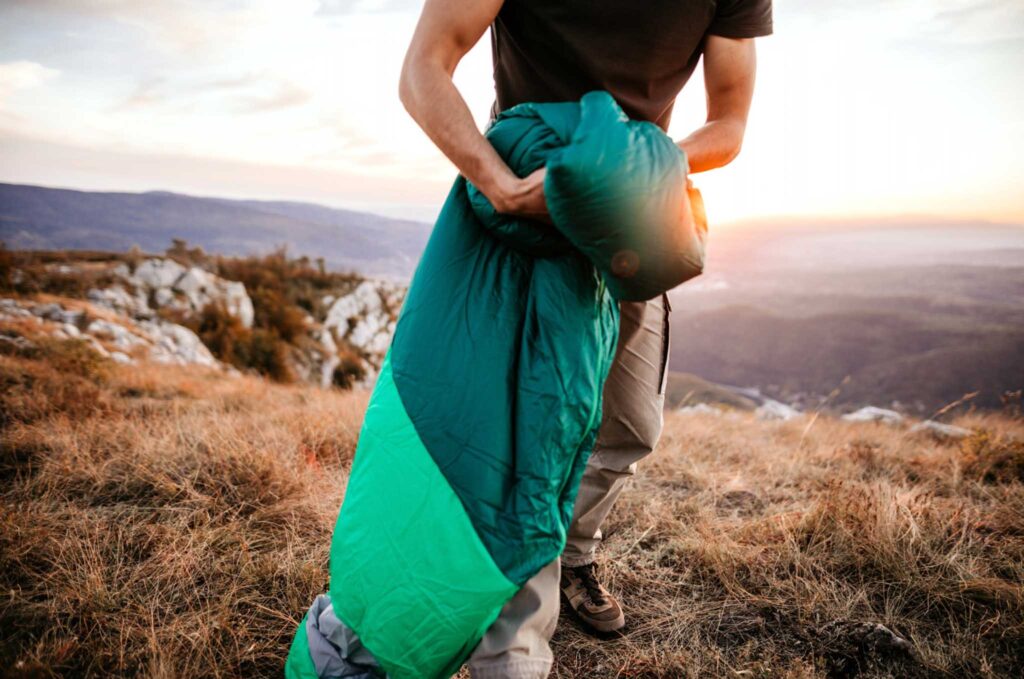
Eco-Friendly Sleeping
Sleeping bags come in many shapes and sizes, but the most eco-friendly sleeping bags are made of synthetic materials, with at least 50% being recycled materials. You can also look for Certified B Corp products to ensure sustainability at every level.
If you’re not worried about having a cruelty-free eco-friendly sleeping bag, you can also opt for a down sleeping bag. Look for Responsible Down Certified or Traceable Down Standard if going that route.
There are also many options for your sleeping pad – length, width, thickness, weight, materials, etc. In terms of sustainability, look for sleeping pads that contain recycled materials. You can keep an eye out for the Global Recycle Standard, which verifies the recycled content of products.
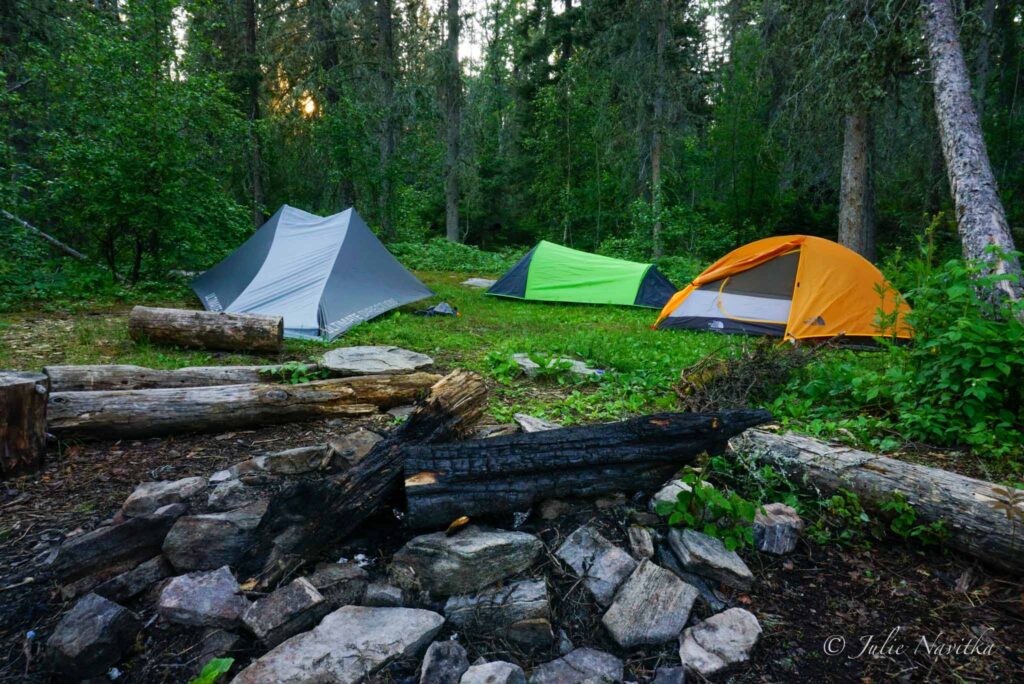
There are eco-friendly tents and camping hammocks made from sustainable materials out there too. You can find tents made from recycled disposable plastics, and if a lightweight tent is your aim, those made from recycled nylon are your best bet.
A sustainable, vegan brand to check out for hiking footwear: Will’s Vegan Store

Will’s Vegan Store
Why choose Will’s Vegan Store?
- Entirely carbon neutral business
- Cruelty free clothing, boots and shoes
- All items are 100% vegan
Eco-Minded camping Essentials for meal time
The reign of paper and styrofoam plates is over. There is no reason you can’t use the dishes you already have at home if you’re car camping in the front country. If you’re packing it in on the trails, then you might want to opt for some gear that’s just a little bit lighter! Enjoy your meals sustainably with these ideas.
- The reusable water bottle you already own is always the most sustainable one. Jumping on the newest trendy water bottle is not sustainable.
- Seek stainless steel for cookware like lidded pots or a frying pan to cook those camp meals.
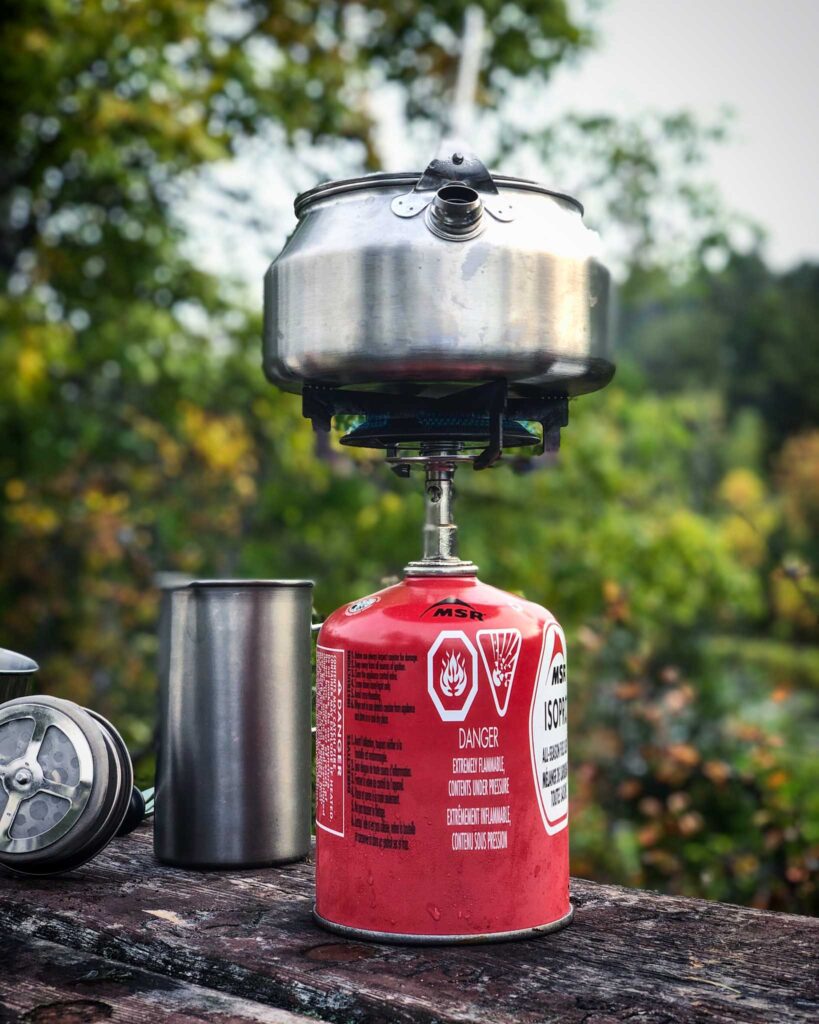
- Plastic-free camping practices should be a priority. Look for sustainable cutlery and dishes made from recycled plastic, bamboo, rice husk, recycled wheat straw, stainless steel or lightweight metals like aluminum, like this reusable utensil set from the Zero Waste Store.

plastic-free utensil set
Set Includes:
- Spork utensil, stainless steel straw, agave fibre straw cleaner, two produce bags, zero waste kit napkin
- Optional knife made of ceramic and bamboo
Another way to ensure you are being your most sustainable self is to care for and repair broken gear, leading to longevity and reducing unnecessary replacements. Remember that investing in quality, sustainable gear for camping will save money in the long run!
5. ethical outdoor living Tips for Waste Management
No one came out to the woods to look at a bunch of unnecessary waste left behind. Just as you wouldn’t throw your garbage or trash on the floor at home, we shouldn’t do so in Mother Nature’s living room.
- Pack with the intention of leaving the absolute minimum behind. This means using reusable water bottles, containers, dishes, and zero packaging waste.
- Bring a separate container for compostables so you can bring them home to your own compost bin. Throwing biodegradable waste in the bush attracts animals and takes longer to decompose than you think!
- Make sure the waste you do produce is disposed of properly. This includes toilet paper if you’re in the backcountry (and make sure you bury your poop!)
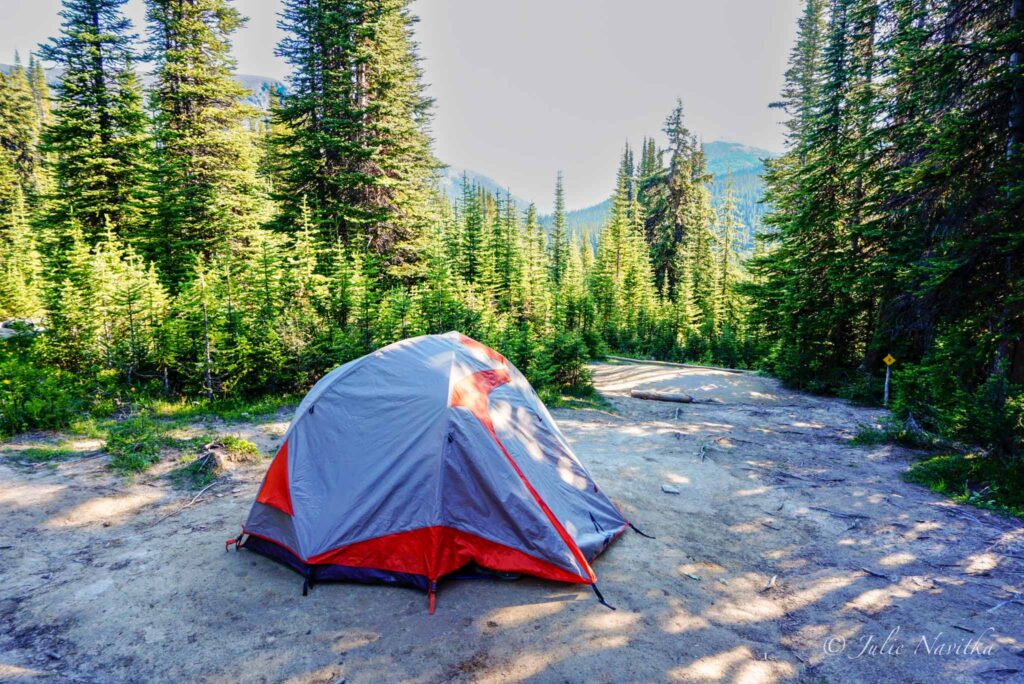
6. Tips to Protect the Natural Environment
A camping trip can only be considered eco-friendly camping when we protect the environment we’re visiting and the residents that call it home. Whether you’re backpacking into the wilderness or relaxing in the hammock you hung in your campsite, our actions determine our impact.
Protect the Surroundings
- Reduce greenhouse gas emissions by opting for campgrounds with non-electric sites, and avoid using generators or running your vehicle unnecessarily.
- If you’re hiking the trails, make sure to remain on the trail. Wandering off causes damage to flora and tiny ecosystems underfoot.
- Camp in designated areas or on durable surfaces for the same reason as above.
- Respect fire regulations and fire bans, and always use a designated fire pit for your campfire.
- Most areas discourage bringing wood in from other areas. Check with your destination before bringing your own wood or moving wood from one area to another.
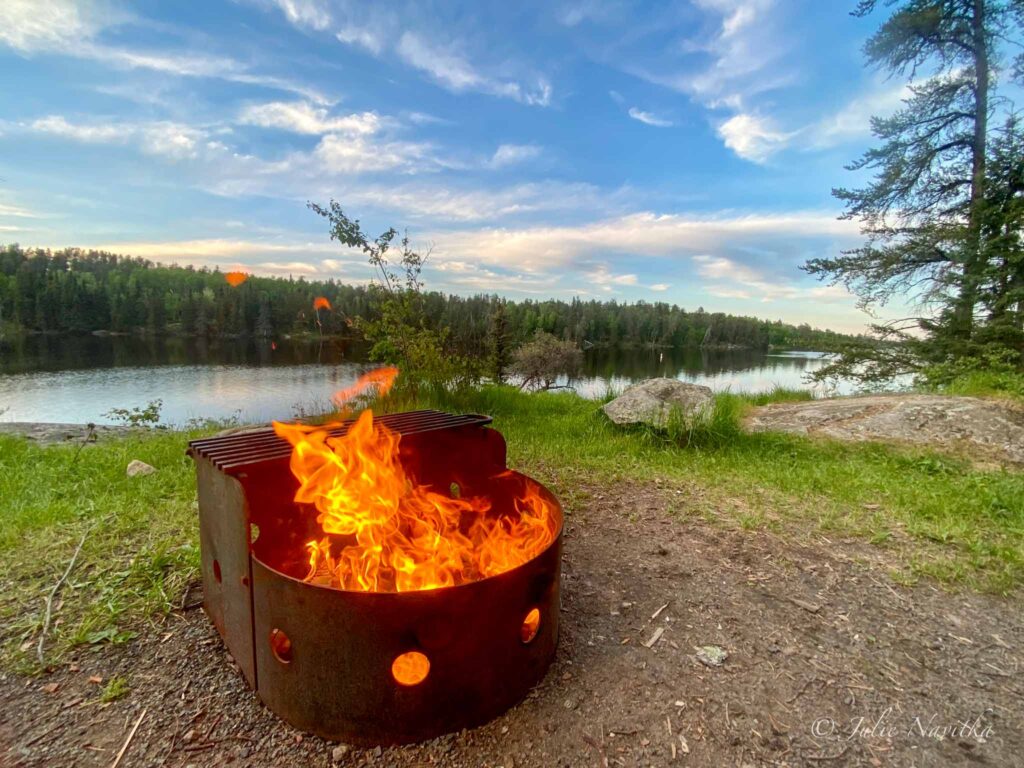
Protect Wildlife
- It may be tempting to feed wildlife but resist the urge. It disrupts their natural feeding and hunting patterns and encourages them to frequent the trails and campsites, which can put them in harm’s way.
- Store your food properly. Whether in a locked vehicle at the campground, in food lockers in the wilderness, or hanging from a tree a reasonable distance from your tent. No one wants to attract bears or other unwanted visitors.
- Do not approach wildlife. Stress can harm animals’ health, not to mention you want to consider your own safety as well. This is often one of the most ignored eco-friendly camping tips.
- Keep it down. The furry creatures in the natural environment didn’t sign up to listen to your bluetooth speaker blaring. Neither did other campers or hikers!
- A great reminder from Ashley Moore, founder of Backcountry Women – “Keep your dog closely leashed to avoid unwanted interactions! Even if your dog normally listens to your commands, when they are in a new environment with new sights and smells they can react unexpectedly. The last thing you’d want is them to provoke an attack from an animal they encounter or disappear into the wild chasing some new scent.”

Protect Waterways
- When you wash the dishes or yourself, always use non-toxic, biodegradable products for eco-friendly camping.
- Sunscreen and bug repellent can pollute lakes and rivers with toxic chemicals. Try to use more natural sunscreens and insect repellent without these substances if you plan on swimming.
- Nothing makes a water source less appealing than poop pollution! When “taking care of business” in the backwoods, ensure you are at least 200 feet from any water source and make sure you bury your brown (toilet paper should be packed out.)
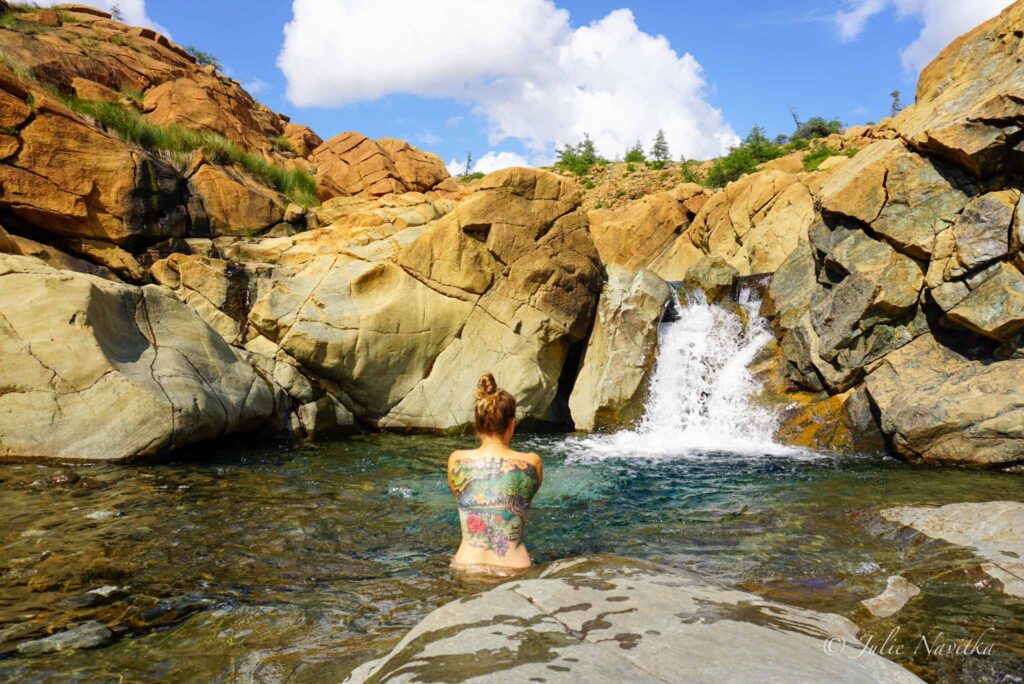
7. Leave No Trace
Most of what has been advised in this article covers the gamut of the Leave No Trace principles, which essentially help minimize your impact on the surrounding area when you adventure outdoors. If you need to become more familiar with the seven principles, you can brush up with this article by Leavenotrace.org.
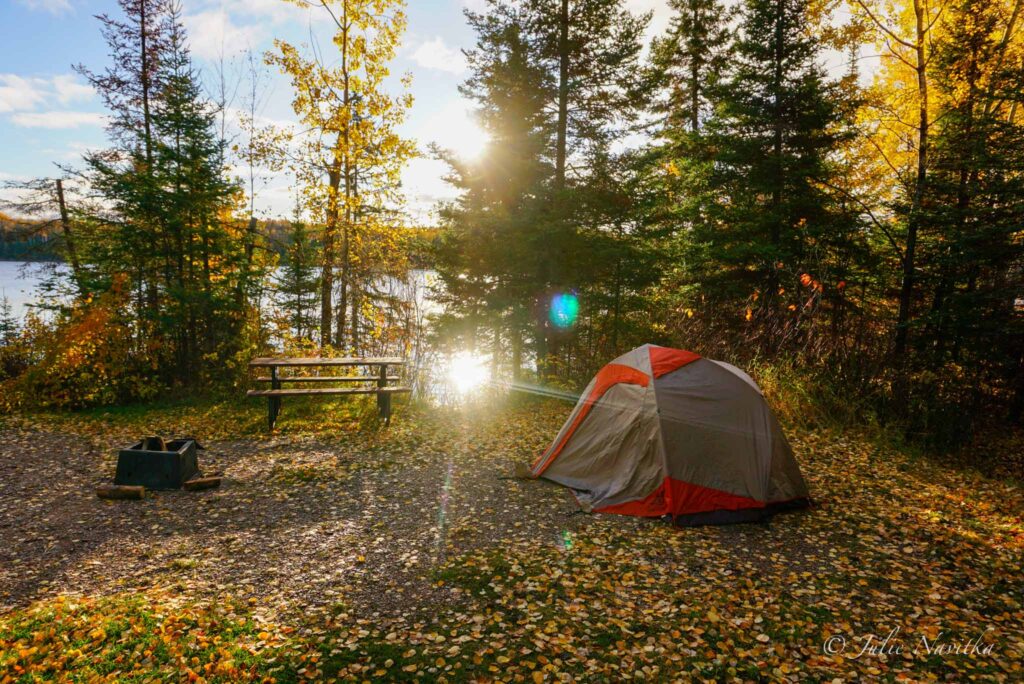
Final Thoughts about eco-friendly camping
It makes perfect sense to protect the environments and destinations we love for our camping trips. Sustainable camping practices are easy to carry out as long as we plan ahead and are mindful of our actions while backpacking or visiting campgrounds.
For your next camping trip, try sticking to the simple quote, “leave nothing but footprints, take nothing but pictures, kill nothing but time”, and you’ll be well on your way to zero-waste camping!
All products recommended to you on Successfully Sustainable are independently researched in depth. To avoid waste and lead a minimal lifestyle, we test products only when required. This post contains affiliate links. If you buy something through our links, we may earn a small commission. Learn more about this here.

